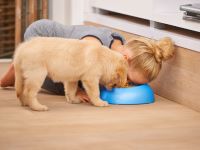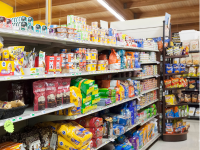
J. David Legan, PhD
Director of Science
David earned his Ph.D. in Food Technology from the University of Reading in the UK by modeling the ecology of mixed microbial populations, and then moved to Campden BRI in a variety of microbiological food safety research and client service roles. During that time, he was project lead for the Bacillus component of the UK’s pathogen modeling program. He moved again to Nabisco Research in New Jersey where he ran the corporate microbiology lab and developed a program of preservation technology development and microbial modeling. After the Kraft Foods acquisition, he moved to Chicago to work on Food Safety and Preservation research, and through modeling and validation studies:
- Optimized Oscar Mayer’s use of lactate and diacetate and their naturally cultured alternatives as Listeria-control agents in Ready to Eat meats
- Specified process conditions central to Oscar Mayer’s commercial launch of High Pressure Pasteurization of naturally cured RTE meats
David had responsibility for the Kraft cultures R&D group, developed a partnership to explore microwave sterilization leading to several patents, and led a program that developed an internal proprietary natural antimicrobial commercialized in several Kraft products. Technologies from his group supported approximately $4 billion in annual sales.
After years as a microbiology "client", he is now back in the "provider" role as Director of Science at Eurofins Microbiology Laboratories, Inc., by way of the Covance Food Solutions group based in Madison, WI, which he joined in 2016. In this role, he ensures appropriate method validation, explores new testing technologies, and fields multiple complicated food microbiology questions.
Products that his team has evaluated or developed and launched include:
- The 3M MDS platform in the Madison microbiology laboratory
- Flow cytometry for enumeration of probiotics
- Strain-level confirmation of probiotic identification using the polymerase chain reaction (PCR)
- Next-generation sequencing using the Oxford Nanopore Technologies GridION sequencing platform for microbial identification and microbiome analysis
Below are resources from David:
How automated and rapid is your testing process? Review our checklist to see if your operation’s processes make you a good fit for automation through managed NIR.
Ensure pet food label accuracy with pet food safety testing, GMO screening, and ingredient authentication. Learn how to verify pet food label claims and meet global regulations.
At Eurofins Nutrition Analysis Center, we highlight the critical role of texture analysis in pet food quality. This video explains how texture analysis quantifies product consistency and provides valuable insights into performance across the supply chain from R&D to addressing customer complaints.
At Eurofins Nutrition Analysis Center, we break down the latest AAFCO changes to dietary fiber labeling in pet foods. In this video, our experts guide you through selecting the right testing method based on product type, offering a comprehensive overview of available analytical approaches.
In this video, Eurofins Nutrition Analysis Center experts delve into the importance of using specialized test methods for chondroitin and glucosamine in complex pet food and treat matrices. We showcase the proprietary method developed by our scientists to overcome analytical challenges and ensure accurate results.
Low water activity foods (LWAFs) have historically been considered low-risk for microbiological hazards because their limited “free” (unbound) water in the formulation prevents bacterial growth. However, foodborne illness outbreaks revealed that pathogens can survive for extended periods in LWAFs, even in the absence of growth. Watch now to learn what is required to validate control measures to reduce microbial risks in LWAFs. Originally Aired on June 18, 2025.
Iodine is an essential trace element found in many food sources as well as the environment. AAFCO recognizes iodine as an essential nutrient for both dogs and cats at differing, species specific levels. This infographic explains explores considerations for iodine in pet food and reasons to test for it.
Hydrolyzed proteins play a crucial role in the pet food, animal nutrition, and feed industries, offering significant benefits in digestibility, allergen reduction, and bioavailability. This white paper explores the advantages of hydrolyzed proteins and their impact on product formulation.
The Pet Food Label Modernization (PFLM) initiative is reshaping industry standards, making dietary fiber a required metric. Learn how this change impacts pet food formulations, testing methods, and nutritional transparency.
Historically, testing for chondroitin sulfate and glucosamine has been done via HPLC-UV analysis via methods from AOAC or USP-NF monographs, which are not suitable for complex matrices such as pet food. Check out our infographic about an innovative solution developed specifically for pet foods and supplements.












